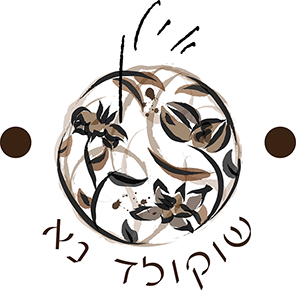How To Control Your Temper
“Tempering” is a basic concept for chocolatiers but can often be confusing to the chocolate enthusiast. It is one of the integral parts of the chocolate making process and one of the easiest to mess up. It is the intricate process of raising and lowering the temperature of melted chocolate to give your treat that exquisite shine and satisfying snap. But why is it so hard to master? What happens if it fails? How can you do it at home?
The Science
Raw cacao butter.
Chocolate is compromised of two main ingredients- cacao paste (or liquor) and cacao butter. Do you remember that term in high school science class… “polymorphic”? I didn’t think so. And what does this term have to do with chocolate? Actually, quite a lot.
Cacao butter is polymorphic and, simply put, it means that it can exist in different crystal forms. The chocolate that you eat is made up of various crystals with cacao butter alone having the potential to exist in six different crystal formations. In raising and lowering the temperature of this mixture in various ways, chocolatiers are breaking apart these crystal formations so the molecules can reform to a new structure. This structure, or form-5 for those interested in sciency terms, is the ideal formation for glossy and flavorful chocolate.
If we fall short in this process, the crystals can take another one of these formations. The result being gritty, dull, and crumbly.
The Techniques
At the basic level, it is the vigorous stirring of melted chocolate that has two results- cooling the chocolate to the correct temperature and encouraging the growth of the proper crystals. However, there are a few techniques that can be used.
Tabling:
Pouring chocolate on prepared table.
You have probably seen something like this at a country fudge shop. There is an art to it and it is difficult to get right. Melted chocolate is poured onto a marble or granite surface and, using a scraper or pallet knife, the chocolate is spread back and forth across the surface until it begins to harden. Once the chocolate on the slab reaches the ideal temperature, it is added back to a bowl of melted chocolate and stirred constantly until the whole batch reaches the correct temperature.
Seeding:
Next technical term that you need to know is “bain-marie.” More commonly know as “double boiler” it is the method of creating a hot water bath with a small amount of water heated in a pot with a heat proof bowl placed on top.
Taking about two-thirds of the chocolate and using a bain-marie, the chocolate is then melted to the initial temperature of the tempering process. After this, the rest of the chocolate is then added to the now melted chocolate and then reheated until the second temperature. This is the easiest tempering method to do at home.
Bain-Marie
Machine:
Results of tempering.
To those who can afford it, you can buy a machine that does the whole process for you. This technique is utilized in mass production.
For us, we do something a little more unique. We appreciate the artisanal quality of chocolate and love making things with our hands. Using a mixture of a few techniques, we found one that allowed us to raise the temperatures of the chocolate to just the right point without sacrificing any of the nutritional value of the cacao paste. Since the tempering process is exclusively for cacao butter, we wanted to make sure that nothing got lost in the process. So you could probably say that we know how to control our temper.
Stirring during the process.





